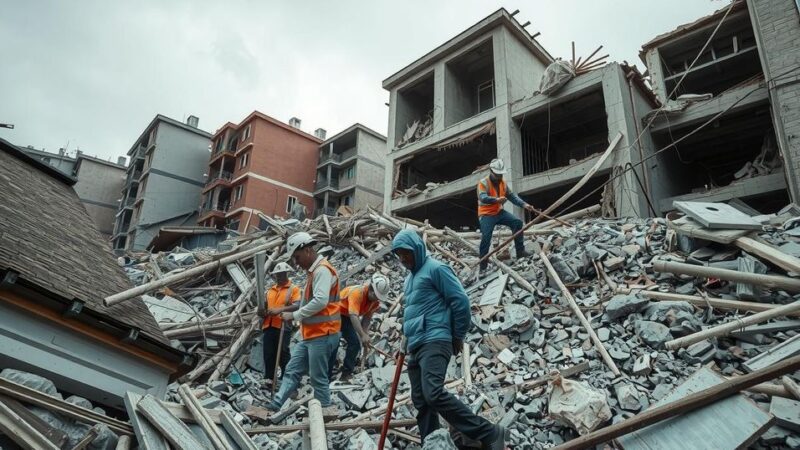Prof. Charles Anosike of NiMet attended the AATF meeting on March 18, 2025, focusing on proactive flood preparedness. The meeting emphasized alignment with global disaster risk frameworks and highlighted the need for immediate action to mitigate flood impacts. Vice President Shettima stressed leveraging science and technology for effective disaster response, while Anosike outlined NiMet’s role in providing crucial forecasts and improvement priorities.
On March 18, 2025, Prof. Charles Anosike, the Director-General of the Nigerian Meteorological Agency (NiMet), attended a meeting of the Anticipatory Action Task Force on Floods (AATF). The gathering, led by Vice President Kashim Shettima, aimed to transition Nigeria’s flood management strategy from reactive disaster response to proactive preparedness.
The AATF is aligned with various global initiatives, including the Sendai Framework for Disaster Risk Reduction, the Sustainable Development Goals (SDGs), and the Paris Agreement on Climate Change. These frameworks emphasize the necessity for proactive disaster preparedness to lessen the effects of natural disasters and protect vulnerable populations.
During this meeting, AATF members updated the Vice President regarding their agencies’ preparedness measures and ongoing efforts to mitigate flooding impacts across Nigeria. Vice President Shettima expressed grave concern about the escalating human and economic consequences of floods, urging immediate actions prior to disasters and advocating for the use of science, technology, and collaborative efforts to ensure safety and protect livelihoods.
Prof. Anosike acknowledged the Vice President’s proactive approach to advancing anticipatory action, stating it is crucial for effective emergency response to climate-related disasters. He elaborated on NiMet’s essential role in generating impact-based forecasts that facilitate early warnings and timely responses to extreme weather incidents, underscoring the importance of integrating these forecasts with other alert systems to improve risk awareness.
Additionally, Prof. Anosike highlighted critical areas for enhancing NiMet’s forecasting capacity, such as refining weather models, investing in forecasting technologies, broadening the observation station network, boosting in-situ data collection, and employing machine learning techniques for improved predictions.
The AATF meeting, led by Vice President Shettima, represents a significant shift in Nigeria’s approach to flood management, emphasizing preparedness over reaction. Collaboration among agencies and the proactive leadership of NiMet, particularly in forecasting and integrating early warning systems, is essential to safeguard communities from the increasing threats posed by flooding. Continuous investment in technology and data accuracy will be vital in advancing Nigeria’s disaster mitigation efforts.
Original Source: sciencenigeria.com






